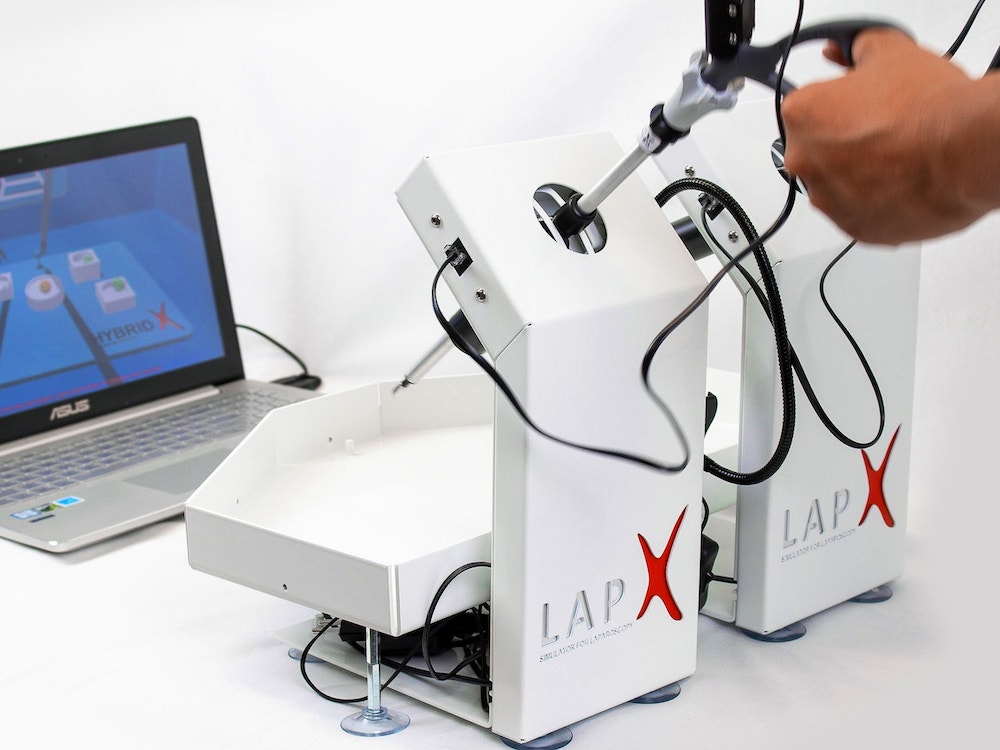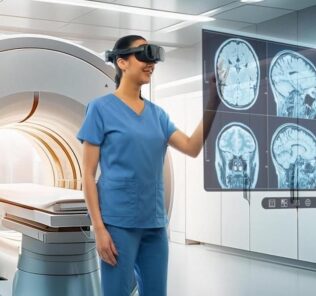Medical-X Simulation Company CEO Shares Laparoscopic Simulator Inspiration
Laparoscopic training simulators are tools that can be used in many training scenarios focused on laparoscopic surgery, as they demonstrate virtually all major abdominal surgical procedures. These surgical simulators can enable learners to begin to familiarize themselves with performance techniques, skills and safety measures. An example of a laparoscopic simulator is Medical-X’s LAP-X, which delivers simulation training for various surgical specialties such as general surgery, gynecology, urology, pediatric surgery and gastrointestinal surgery. In today’s article, Medical-X CEO Dervis Dermirtas shares the personal story behind what inspired him to develop laparoscopic training simulators:
“My path into healthcare simulation was driven by two passions of mine: rocket science and becoming a doctor. While attending Delft University of Technology (TU Delft), I decided to pursue the former and get my degree in aerospace engineering.
One of the master’s courses we had back then was about “Turning Technology into Business.” Participants were equipped with a strong conceptual foundation and active understanding of the dynamic process of technology-based entrepreneurship. Each group of students was assigned an original patent, usually old and expired, and was expected to evaluate the commercial potential of this technology.
Sponsored Content:
What stood out to me was a patent under the names of three doctors about training surgeons. The idea was good, but there was room for improvement. I was eager to work on this patent as I felt it was literally calling out for me! It was an opportunity to nurture my passion for the world of medicine and contribute to the healthcare industry.
When I first started working on the design, I had a vision for something innovative, useful and more realistic for surgeons. I built my prototype design using PVC tubes, broken scissors and part of a joystick. When I presented it to my professor, she was utterly amazed and said that the design was quite novel and had great potential.
Eventually she suggested applying for a patent, connecting me with enthusiastic researchers and doctors for consultation. Thus, the idea of building the laparoscopic simulators was sparked! My purpose was clear: I wanted to help people. What better way to do that than by helping doctors?
I thought to myself, “Having better trained doctors will result in less mistakes, less failures and less patients ending up in hospitals longer than they should be.” Hence, it would save lives and that was what gave me the motivation. I wanted to build something better, faster and more cost-effective, which explains why our LAP-X is the most cost-efficient VR trainer in the market today and the only simulator using real surgical instruments. That was my drive and motivation. It was a long road to get there and every step was worth the effort.
Sponsored Content:
The technology that was available back then, 20 years ago, didn’t convey a feeling of realism; you are holding something that is not remotely close to the real instrument and you could still feel some resistance. There wasn’t the same range of possibilities like we have today.
I identified these gaps and decided to build a solution with hybrid functionality. This allows the user to work and measure exercises in the 3D world and make use of actual physical exercises. I wanted to shape my simulator to be realistic enough for surgery needs. Consequently, I built the hardware around an actual surgical instrument instead of building a system that tries to mimic the surgical instrument.
The final prototype was ready: Virtual reality trainer with box exercises. It would help students and surgeons improve their hand-eye coordination and give them the opportunity to measure their progress and leverage skills.
Furthermore, the system is made flexible to integrate additional modes and upgrades. It is hybrid in functionality, so you can use both VR and box training mode, or you can switch one mode and work on the other. Ergo, the three systems for laparoscopic simulator we have today at MEDICAL-X are: LAP-X BOX, LAP-X VR and LAP-X Hybrid.
I must point out that the LAP-X is not limited to one specialty. It is multidisciplinary and can be useful for different areas of surgery, even for different species. It is not exclusive for surgeons but also invaluable in training assistants. The system is flexible and adjustable for the purpose of training. It can be used in different sizes. For example, horse surgeons can adjust the system and make it usable as a horse simulator.
The instruments are also subject to development and changes. In order to accommodate a customer’s request, we remade one of our LAP-X units to support nursing training and help them train on how to scope. Instead of having two graspers in the LAP-X controllers, we built an endoscope. The controllers are separated and can be adjusted in different positions and angles. You can go as far as repositioning the controller to mimic the position of the actual instruments in the real body. This is how flexible our system is.
In terms of effectiveness; our system was featured in research about the effect of continuous motion parameter feedback on Laparoscopic Simulation Training made by the university hospital of Muenster in Germany. They noted an increase and improvement of the skills, especially when it comes to hand-eye coordination.
Today, there are over 200 installations of the LAP-X around the world. It is still growing and it is satisfying to see how the units are being used by hospitals to test the students and to warm up their skills before they perform actual surgery.
We didn’t extend the system towards a more photo-realistic surgery, an extremely difficult task which risks a negative learning effect. We want to keep the system straight to the point and to serve its initial purpose by providing easily accessible, minimally invasive surgery simulation training for medical professionals at low cost.”
More About Medical-X
Medical-X is an innovative scientific company that designs, develops, manufactures, markets and distributes medical simulation products for teaching and training. A Dutch company based in Rotterdam, the Netherlands, MEDICAL-X specializes in the production of high-fidelity simulation products, medical training manikins and full-flight simulators.
Since foundation, MEDICAL-X has developed new state-of-the-art simulators with realism in both looks and functionality. To provide such quality simulated training solutions in various medical fields, MEDICAL-X incorporates cutting edge technology with the professional input of expert physicians.
Today, these simulators are used in medical schools, universities, hospitals and skills centers outside the operating room. From the West Virginia School of Osteopathic Medicine to the Russian Society for Simulation Education in Medicine and the International Congress of Medical Education (ICME) in Lima, Peru, MEDICAL-X is bringing healthcare simulation technologies to learners across the world.
Learn More About Medical-X’s Lap-X
Today’s article was guest authored by Dervis Dermirtas, CEO at Medical-X.
Have a story to share with the global healthcare simulation community? Submit your simulation news and resources here!
Sponsored Content:



















